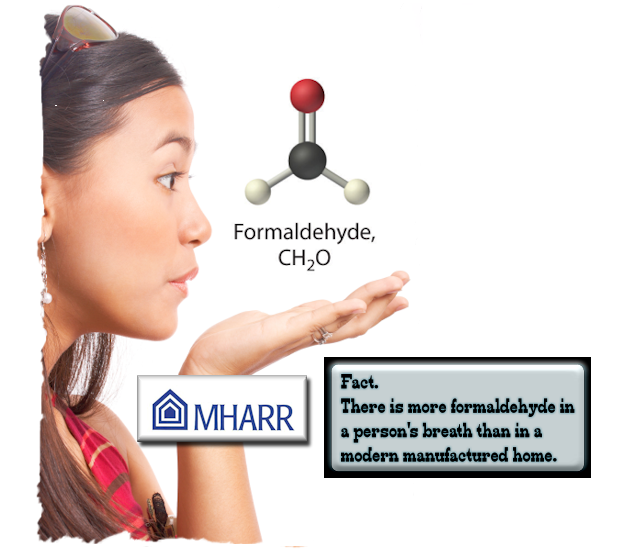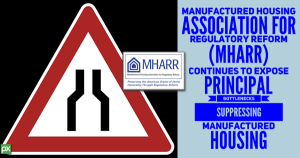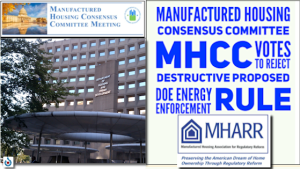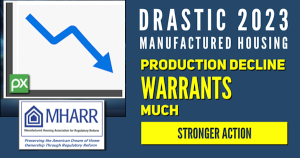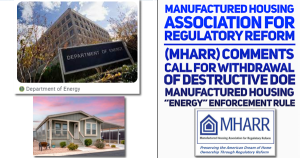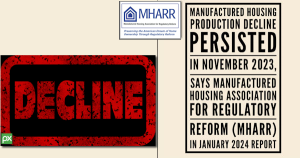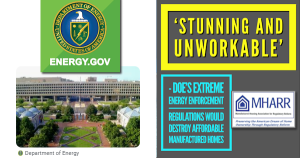[vc_row][vc_column][vc_column_text]Washington, D.C., May 18, 2017 – The Manufactured Housing Association for Regulatory Reform (MHARR) has filed written comments (copy attached) with the U.S. Environmental Protection Agency (EPA) seeking the repeal of discriminatory requirements imposed on federally-regulated producers of manufactured housing under EPA’s Formaldehyde Emission Standards for Wood Products rule, published on December 12, 2016. MHARR’s written comments follow – and expand-upon — a verbal statement presented by MHARR at a May 1, 2017 meeting at EPA headquarters in Washington, D.C. (see, MHARR May 8, 2017 News Release – “MHARR to EPA: Withdraw Discriminatory Formaldehyde Mandate”). Both the May 1, 2017 meeting and MHARR’s subsequent written comments are part of a new EPA rulemaking docket (initiated on April 13, 2017) seeking comments, pursuant to Executive Order (EO) 13777 (“Enforcing the Regulatory Reform Agenda”) issued by President Trump on February 24, 2017, regarding regulations, or portions thereof, that “may be appropriate for repeal, replacement or modification.”
In its written comments (as it did in its verbal statement), MHARR calls for the elimination of labelling and record-keeping requirements imposed — on a discriminatory basis — under the EPA final rule on builders of manufactured housing regulated by the U.S. Department of Housing and Urban Development (HUD), but not on producers of site-built homes, which the final rule expressly exempts from regulation. The comments assert that the distinction which the rule attempts to draw between the two categories of residential construction: (1) has no basis whatsoever in the text (or any reasonable interpretation) of the statute mandating the EPA regulations; and (2) that the distinction, in any event, is factually specious in that both manufactured homes and site-built homes are constructed using the same materials and components, and only differ in that manufactured homes are built indoors, in a factory, under controlled conditions, while site-built homes are constructed outdoors. The comments, therefore, maintain that there is no legitimate or even rational basis for this distinction and for the discriminatory requirements imposed on manufactured homes – particularly when manufactured homes, unlike site-built homes, are alreadysubject to HUD formaldehyde emissions standards, and have been since 1984.
MHARR’s comments, therefore, call on EPA to expressly exempt HUD Code manufactured homes and manufacturers from the labelling and record-keeping requirements applicable to fabricators of “finished goods” under the rule – in the same manner that site-builders are exempted – and to make such other appropriate and necessary amendments to the rule to ensure the non-discriminatory treatment of HUD Code manufactured homes.
The publication of this “midnight regulation” by EPA in the waning days of the Obama Administration – with its baseless, discriminatory mandates on HUD Code manufacturers, despite existing HUD standards for formaldehyde emissions – stands as yet another example of the failure of the HUD manufactured program and its current administrator, Pamela Danner, to stand-up for manufactured housing, and to “facilitate the acceptance of the quality, durability, safety and affordability” of HUD regulated manufactured housing against regulatory onslaughts (and particularly discriminatory regulation) by other federal agencies. AsMHARR asserted in its original comments on EPA’s proposed formaldehyde rule in 2013: “[T]he EPA standards … when implemented … [will] represent unnecessary, duplicative overkill for manufactured homes which have already achieved formaldehyde safety for consumers at emissions levels that are less costly to meet, but nevertheless ensure the safety of manufactured housing residents.” MHARR is aware of no such public defense by the HUD program or its administrator, of either HUD-regulated manufactured housing or the existing HUD formaldehyde standards, in either the original EPA formaldehyde rulemaking proceeding or in the new regulatory reform rulemaking docket under EO 13777.
Worse yet, this is not an isolated incident or failure, as HUD and the program administrator – charged by law with advancing the “availability of affordable manufactured homes … for all Americans” – failed to publicly object, among other things, to either: (1) U.S. Department of Energy (DOE) proposed “energy” standards for manufactured housing that – based, in-part, on junk science now repudiated by the Trump Administration in Executive Order 13783 (March 28, 2017) – would needlessly impose costs increases of potentially $6,000.00 per home (or more) on the mostly moderate and lower-income American families who rely the most on manufactured housing; or (2) a Federal Emergency Management Agency (FEMA) contract for inspection and monitoring services with the same entity that has been HUD’s de facto sole-source manufactured housing program “monitoring” contractor since the inception of federal regulation more than 40-years ago. MHARR, for its part, strenuously objected to this contract on the basis that it was rife with actual and potential conflicts of interest, and exposed FEMA producers to regulatory consequences within the HUD enforcement system for homes produced pursuant to FEMA specifications (i.e., “funneling” of FEMA homes into the HUD Subpart I notification and correction system, among other potential regulatory issues).
All the while – as MHARR and the industry have been left to fend-off these assaults on affordable housing and home ownership (assaults that, in some cases, would usurp HUD’s own regulatory authority) — the HUD program administrator has devoted scarce resources to multiple newsletters, reports, meetings, conferences, etc. purporting to show her alleged support for the industry. Industry members, consumers and other stakeholders, however, can make their own judgments and draw their own conclusions based on actual “facts on the ground.”[/vc_column_text][/vc_column][/vc_row]

